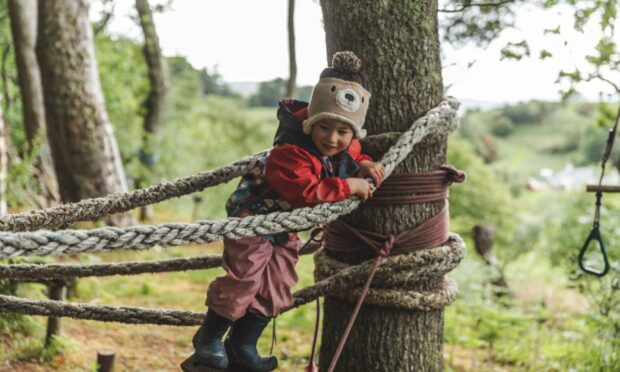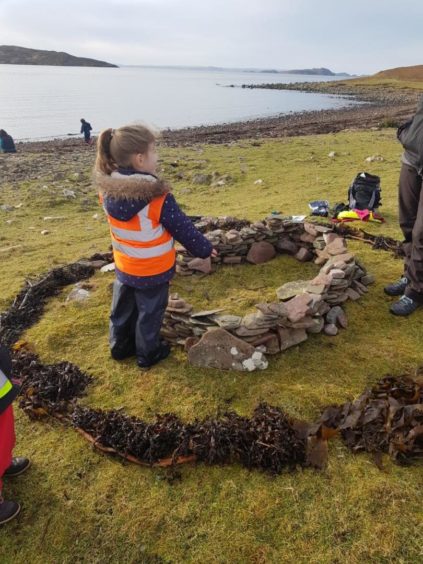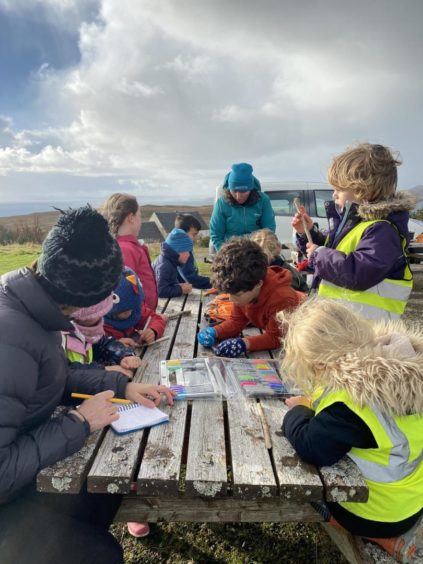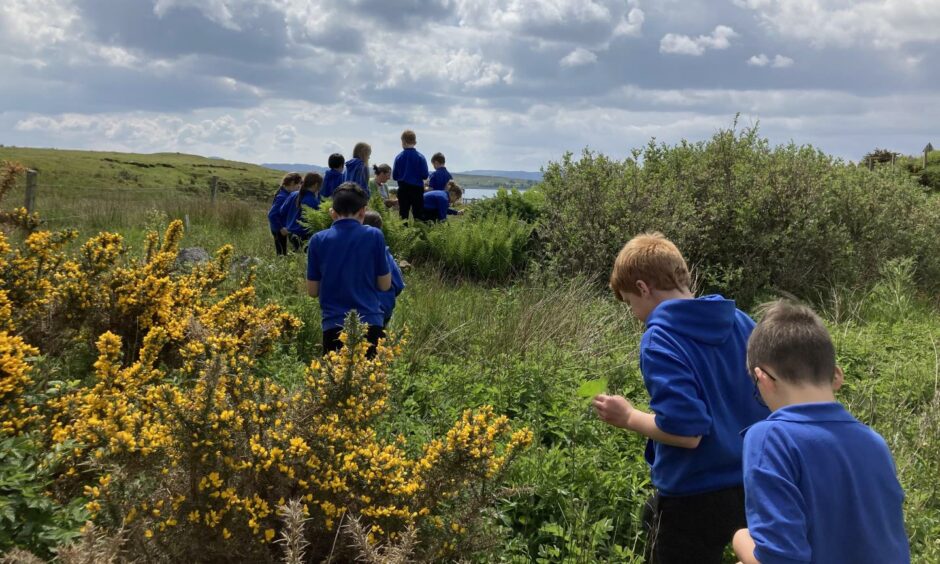Primary school children averaged just seven minutes of outside play per week in 2022, according to the report.
This is a sharp decrease from the 24 minutes pupils enjoyed in 2014.
NatureScot says the decline is partly down to Covid restrictions, but the pandemic alone doesn’t explain the size of the drop.
Instead, they say school staff lack confidence in delivering outdoor education. It’s also harder for bigger, urban schools, and those in disadvantaged areas.
The good news is that younger children are playing outside more than ever before. Nurseries responding to the survey revealed their children spend 39% of their day outside, up from 36% in 2014.
NatureScot hope to see more opportunities for outdoor learning in schools, stimulating a post-pandemic generation’s connection to nature.
‘It makes sense to use the natural resources around us’
This latest research is the most extensive since 2014, taking in 19 early years centres and 25 primary schools. It was led by NatureScot and co-funded by Historic Environment Scotland, Scottish Forestry, Loch Lomond and the Trossachs National Park and Cairngorms National Park.
Interestingly, the survey showed that all schools offering more than 10 minutes per week of outdoor provision are small schools of less than 100 pupils.
And learning in nature is preferable to other outdoor spaces such as playgrounds. Asked which outdoor spaces pupils enjoyed the most, woodlands, lochs and coastlines all scored higher than school grounds.
Does this offer a unique advantage to rural areas, like Highland and Aberdeenshire? Looking at some of the tiny schools dotted across the north, it would seem so.
Colin Masterson is headteacher of Achiltibuie and Lochinver primary schools, on the remote north west coast of the Highlands. Achiltibuie is surrounded by moorland and close to the seaside, while Lochinver has Loch Culag on three sides and two community woodlands across the road.
“These are really rural communities in spectacular locations so it makes sense to use the natural resources around us,” Colin told the P&J.
Leaders in nature
And he says attitudes to outdoor education have changed over time. More and more, educationalists recognise the rich learning that takes place outside of the classroom.
“It’s not all bush craft, dens and marshmallows,” he says. “When we’re out in the woods, on the beach, in the moors, we’re developing the curriculum and learning skills in a real-life context.”
Pupils in Achiltibuie and Lochinver enjoyed forest schools under a five-year partnership with Coigach and Assynt Living Landscapes. At the end of that partnership, Living Landscapes awarded £2,000 in funding to help the schools train their own woodland activity leaders. As a result, outdoor learning is firmly embedded in the daily curriculum.
Play equipment on the school grounds takes the form of decking planks, branches and milk crates to fuel kids’ imaginations. Beyond, pupils explore the local moorland. It sets learning in a real-world context, and provides valuable insights into subjects like ecology and climate change.
“For World Earth Day we got out on the moors and learned about different landscapes, about peat bogs and how carbon is released,” says Colin. “We worked on climate change literacy, understanding the key phrases such as food miles, and how we can all help.”
It also encourages a wider definition of achievement: “Many of the kids who struggle to sit and learn indoors actually assume leadership roles when you take them outside,” says Colin.
NatureScot hopes to help build teachers’ confidence
Those benefits are part of the more holistic approach captured in Scotland’s Curriculum for Excellence. NatureScot say outdoor learning and play supports improvements in young people’s health, wellbeing and educational outcomes.
But it seems there’s work to be done in helping schools to grab that opportunity. Just under a decade ago, primary school pupils averaged 24 minutes of outdoor play per week. It’s not a lot, yet it’s now down at just seven minutes.
NatureScot says that teachers responding to the survey said outdoor learning is curriculum enhancing and enjoyable. However, many said they lack confidence in offering it. Early years practitioners reported higher confidence, which is borne out in the impressive 39% uptake rate in outdoor play.
NatureScot’s outdoor learning advisor, Sharon Cunningham, pledged to work with schools to improve uptake.
“As our communities, early years centres and schools recover from the restrictions and pressures of the pandemic, Scotland’s nature offers the key to healthy, engaging and valuable time spent playing and learning outdoors for our children,” said Sharon.
“Given that we have seen a decline, NatureScot looks forward to supporting the sector through these challenges as it builds the confidence of our educators – ensuring the next generation grow up to value and protect nature.”
More from the Schools & Family team
‘The young people at Northfield are incredible’: Council seizing opportunity for much-needed change




Conversation